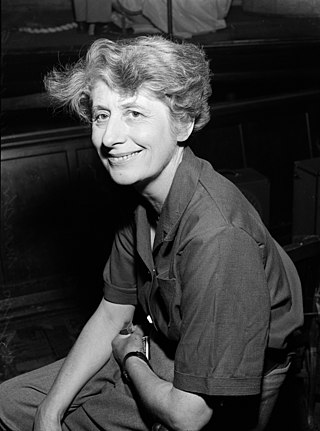
Dame Edith Ngaio Marsh was a New Zealand mystery writer and theatre director. She was appointed a Dame Commander of the Order of the British Empire in 1966.
Roderick Alleyn is a fictional character who first appeared in 1934. He is the policeman hero of the 32 detective novels of Ngaio Marsh. Marsh and her gentleman detective belong firmly in the Golden Age of Detective Fiction, although the last Alleyn novel, Light Thickens, was published in 1982.
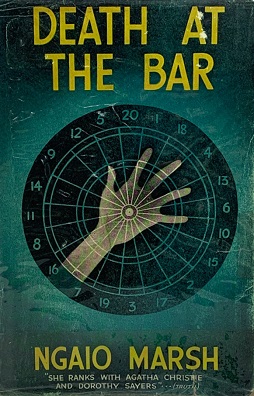
Death at the Bar is a crime novel by Ngaio Marsh, the ninth to feature her series detective Chief Detective-Inspector Roderick Alleyn of Scotland Yard and published in 1940 by Collins (UK) and Little, Brown (USA).

Final Curtain is a 1947 crime novel by the New Zealand author Ngaio Marsh, the fourteenth in her series of mysteries featuring Scotland Yard detective Roderick Alleyn. It was published in Britain by Collins and in the USA by Little, Brown. The plot features the world of actors, and Alleyn's wife, the artist Agatha Troy, has a main role in the story.

A Man Lay Dead is a detective novel by Ngaio Marsh; it is the first novel to feature Roderick Alleyn, and was first published in 1934. The plot concerns a murder committed during a detective game of murder at a weekend party in a country house.

Vintage Murder is a detective novel by Ngaio Marsh; it is the fifth novel to feature Roderick Alleyn, and was first published in 1937. Based in New Zealand, the plot centres on a travelling theatrical troupe and prominently features Doctor Rangi Te Pokiha, a Māori, and a "tiki" (hei-tiki) a Māori fertility pendant.

Overture to Death is a detective novel by Ngaio Marsh; it is the eighth novel to feature Roderick Alleyn, and was first published in 1939. The plot concerns a murder during an amateur theatrical performance in a Dorset village, which Alleyn and his colleague Fox are dispatched from Scotland Yard to investigate and duly solve.

Death and the Dancing Footman is a detective novel by Ngaio Marsh, the eleventh of her Roderick Alleyn books and was first published in 1941 in the US by Little Brown of Boston and in 1942 in the UK by Collins Crime Club. It was written in New Zealand, but set in a Dorset, England country house.

Colour Scheme is a detective novel by Ngaio Marsh; it is the twelfth novel to feature Roderick Alleyn, and was first published in 1943 by Collins Crime Club. The novel takes place in the Northland region of New Zealand during World War II; the plot involves suspected espionage activity at a hot springs resort on the coast of New Zealand's Northland region.

Spinsters in Jeopardy is a detective novel by Ngaio Marsh; it is the seventeenth novel to feature Roderick Alleyn, and was first published in 1953.
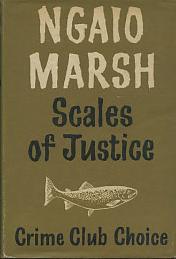
Scales of Justice is a detective novel by Ngaio Marsh. it is the eighteenth novel to feature Roderick Alleyn, and was first published in 1955.

Off with His Head is a detective novel by Ngaio Marsh; it is the nineteenth novel to feature Roderick Alleyn. It was first published in the USA by Little, Brown of Boston in 1956, under the title Death of a Fool, and in the UK by Collins in 1957.

Singing in the Shrouds is a detective novel by New Zealand writer Ngaio Marsh; it is the twentieth novel to feature Roderick Alleyn, and was first published in 1959. The plot concerns a serial killer who is on a voyage from London to South Africa.

False Scent is a detective novel by New Zealand writer Ngaio Marsh; it is the twenty-first novel to feature Roderick Alleyn, and was first published in 1959, by Collins in the UK and Little, Brown in the USA. The plot concerns the murder of a West End stage actress during her 50th birthday party, and continues Marsh's fascination with the theatre and with acting.

Death at the Dolphin is a detective novel by Ngaio Marsh. It is the twenty-fourth novel to feature Roderick Alleyn, and was first published in 1966 as Killer Dolphin in the United States. The plot centres on a glove once owned by Hamnet Shakespeare, on display at a newly renovated theatre called the Dolphin. Several characters from the novel return in Marsh's final book, Light Thickens.

Black As He's Painted (1974) is a detective novel by Ngaio Marsh, the 28th to feature Roderick Alleyn.
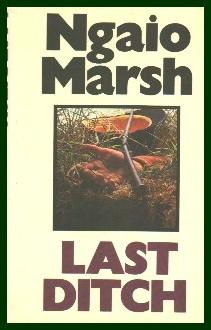
Last Ditch is a detective novel by Ngaio Marsh; it is the twenty-ninth novel to feature Roderick Alleyn, and was first published in 1977. The plot concerns drug smuggling in the Channel Islands, and features Alleyn's son, Ricky, in a central role.
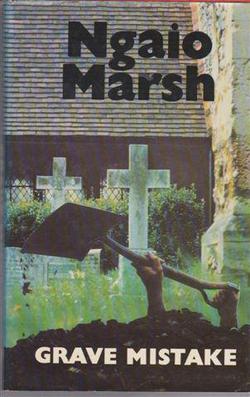
Grave Mistake is a detective novel by Ngaio Marsh; it is the thirtieth novel to feature Roderick Alleyn, and was first published in 1978. The plot concerns the supposed suicide of a wealthy widow in a chic rest spa, and involves a rare and famous postage stamp.

Photo Finish (novel) is a detective novel by Ngaio Marsh; it is the thirty-first, and penultimate, novel to feature Roderick Alleyn, and was first published in 1980. Set in a millionaire's island mansion on a lake in New Zealand's South Island, it is the last of Ngaio Marsh's four New Zealand set novels - the others being Vintage Murder (1937), Colour Scheme (1943) and Died in the Wool (1945).
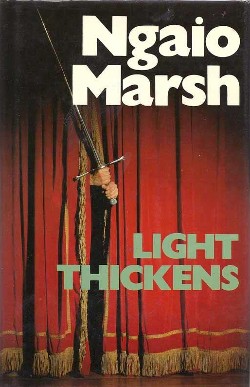
Light Thickens is a detective novel by Ngaio Marsh; it is the thirty-second, and final, novel to feature Roderick Alleyn, and was first published in 1982. The plot concerns the murder of the lead actor in a production of Macbeth in London, and the novel takes its title from a line in the play.
















